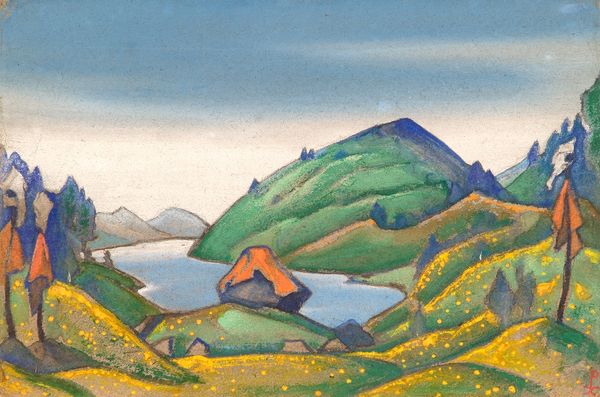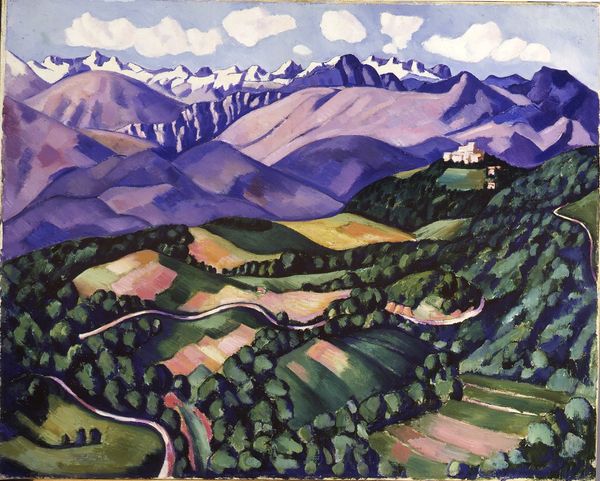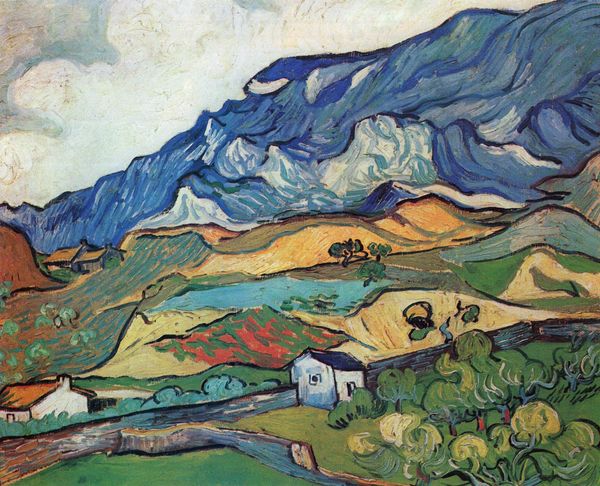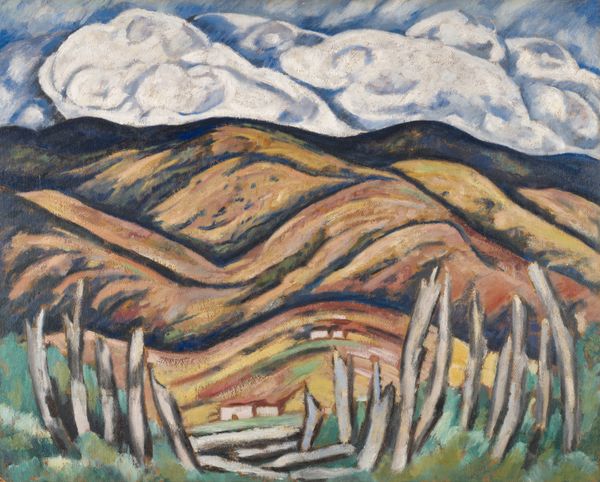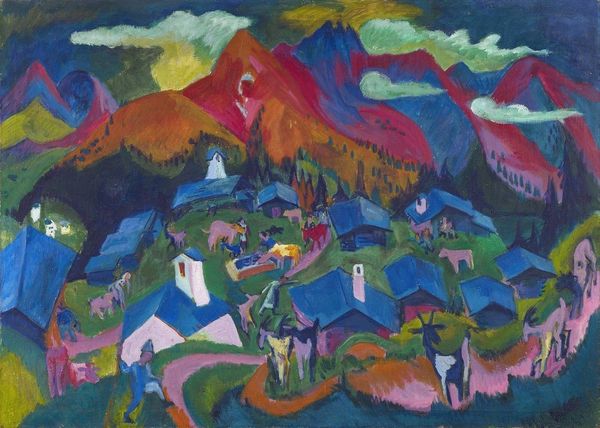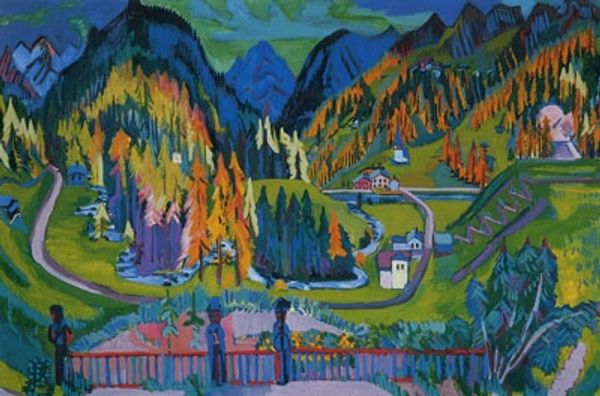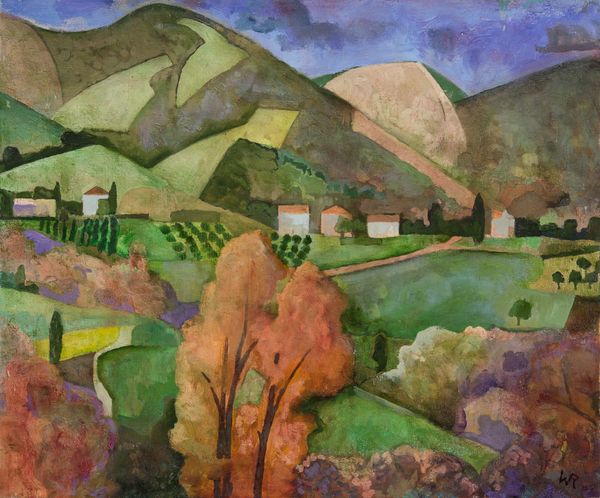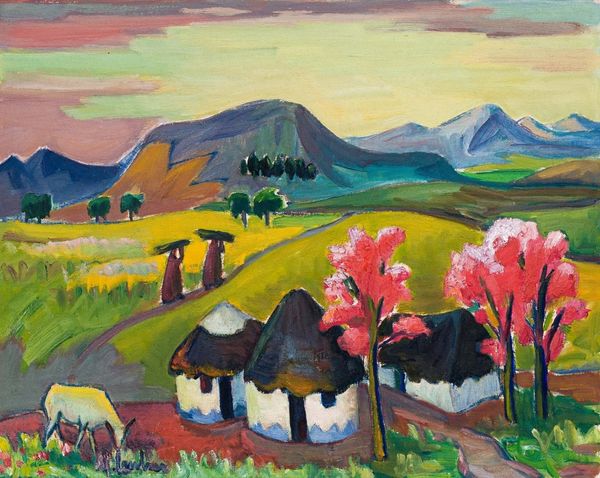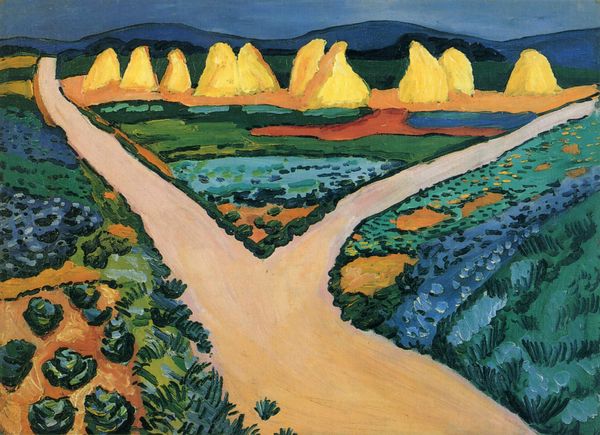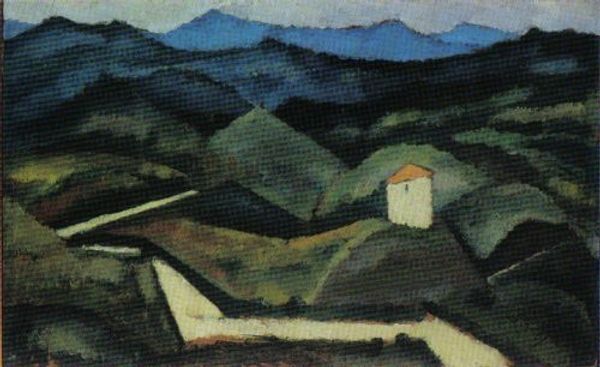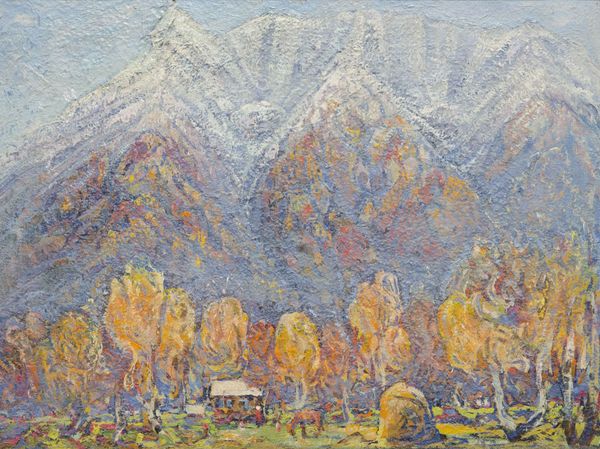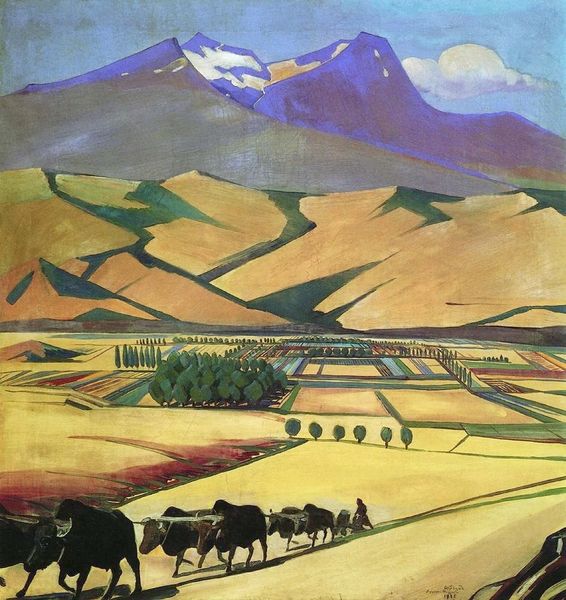
painting, oil-paint
#
painting
#
oil-paint
#
landscape
#
figuration
#
oil painting
#
modernism
#
watercolor
#
realism
Copyright: Rita Angus,Fair Use
Curator: Rita Angus's 1955 oil painting, "Flood, Hawke's Bay," captures a landscape undergoing profound environmental stress. Editor: Immediately, the striking compositional organization grabs my attention – the stark geometry amidst what would usually be considered organic shapes is just masterful. It feels like a meditation on how order confronts chaos. Curator: Angus painted this in the aftermath of a devastating flood, using flattened perspective and bold colors to represent the flooded landscape and the resilience of rural communities. Her depiction serves as an acute commentary on the power of nature. It is really more of a political statement than many appreciate at first glance. Editor: Precisely, note how Angus simplifies forms, like the almost cubic houses and the rhythmic arrangement of the hills and mountains in the background. It presents a conscious exploration of space and form. The interplay of the orange, greens and grays alone feels very emotionally purposeful. Curator: Her personal pacifism and interest in social justice strongly influenced her work. “Flood, Hawke’s Bay” could be viewed as an allegorical representation of societal upheaval and recovery. Do you see, even in the animals represented in the work, how it tells a layered story that engages far more than simply surface? Editor: Undoubtedly, there’s something primitively honest in the color palette. There are strong formalist foundations at play, such as her attention to line and block structure. I cannot look away! Curator: Ultimately, the work reveals Angus’s commitment to using art as a platform to discuss crucial social and environmental issues, creating a landscape that urges viewers to reflect on vulnerability, fortitude, and collective identity. Editor: Yes, that striking tension between the representational subject matter and the stylized approach creates a sense of unease and wonder all at once, inviting us to look closer and really engage with all artistic and narrative intentions that it beholds.
Comments
No comments
Be the first to comment and join the conversation on the ultimate creative platform.
